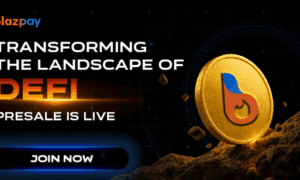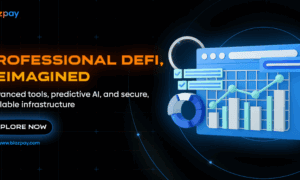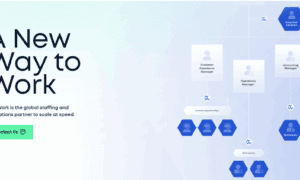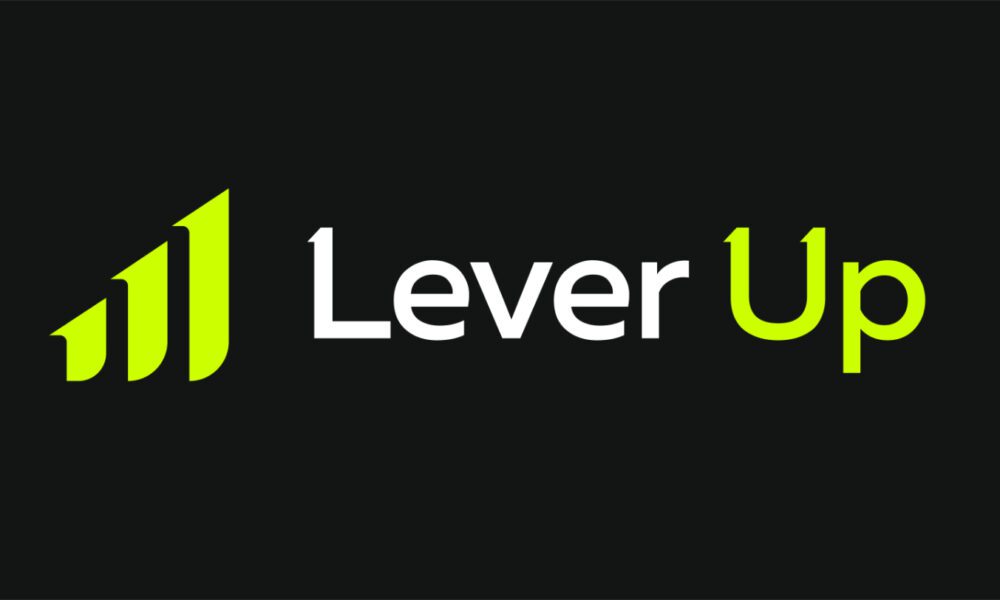TechBullion welcomes Sarah Abdelhady, who works at a global technology company as a Senior Program Manager. Sarah’s experience spans over 8 years, focusing on sales enablement and GTM strategy across the EMEA region, and she has deeply participated in implementing complex programs and scaling product adoption.
Sarah joined TechBullion today to discuss crafting GTM strategies and leading high-performing teams amid complex stakeholder dynamics across various market landscapes. She continues to shape and lead large AI masterclasses across the EMEA aimed at training sellers to boost customer interactions. In this discussion, she shares her thinking on execution, proactive leadership, change management, and how she delivers value through every initiative.
1. With over 8 years of experience in program management, you’ve managed several complex programs and strategic initiatives. Can you share a project that stands out as a significant achievement in your career, and what made it successful?
Thank you for the question. One project that stands out is the EMEA launch of a significant AI product. This was a particularly rewarding experience due to the inherent complexities of introducing such a groundbreaking tool to a diverse market like EMEA.
The initial challenge was launching a product that was initially only available in English across a region with such varied linguistic needs. We addressed this by developing a phased rollout plan, prioritising quality and security to build customer trust. This involved a strategic approach to language localisation, starting with key markets like France and Germany, and extending to the rest of EMEA countries like Poland and South Africa.
While we worked on expanding language availability, we adopted a proactive approach in non-English speaking markets. This involved showcasing the product roadmap, generating awareness and anticipation, and leveraging learnings from the US and UK launches to refine our strategy. This iterative approach allowed us to continuously improve and tailor the launch to the specific needs of each market.
Ultimately, the success of this project stemmed from meticulous planning, a focus on quality and security, and a flexible approach that allowed us to adapt to the unique challenges of the EMEA market. It was a testament to the power of a well-defined strategy and a collaborative team.
2. Leading GTM strategy across diverse markets in the EMEA region comes with unique challenges. What are some key obstacles you’ve encountered in driving success, and how have you addressed them?
Leading GTM strategy in EMEA presents unique challenges due to its diversity. Varied business practices necessitate tailored strategies achieved through market research, understanding customs, building relationships, and adapting communication. Language barriers require quality translation and localisation, multilingual teams, and empowering local representatives. Diverse technology adoption levels need market assessments and adapted approaches, such as extra support in less mature markets. These challenges also create growth opportunities. I embrace EMEA’s diversity and adapt strategies to unlock potential and drive success through ongoing learning. I overcome these challenges by listening closely to each market, holding regular meetings with different regions, and staying connected with the sales teams on the ground. Knowing everyone by name, even with a team of over 100, fosters strong relationships and ensures we’re responsive to local needs.
3. As a Senior Program Manager, you’re responsible for managing various stakeholders and accelerating product adoption. How do you ensure alignment between different teams and departments to achieve common goals?
You’re right, managing stakeholders and driving product adoption are key. To ensure alignment, I prioritise strong relationships and open communication. I always create a stakeholder map, even on paper, to visualize relationships and proactively address potential misalignment. In the initial phase, I focus on building connections and trust. I take time to understand each team’s priorities, goals, and even compensation objectives, if applicable, to truly understand their motivations and concerns. This deeper understanding helps me align the program for a win-win for everyone involved. By understanding perspectives and ensuring needs are met, I foster a sense of shared ownership and commitment, breaking down silos and driving better outcomes. To influence effectively and maintain program momentum, always back your arguments and proposed program goals with concrete data and evidence. This adds credibility and helps to persuade stakeholders. Furthermore, it’s crucial to ensure there is a clearly defined “north star” objective that everyone is working towards. This shared vision keeps the program focused and prevents it from faltering or losing direction as it progresses.
4. You are currently leading a series of masterclasses across the EMEA region, engaging a large and diverse audience. What’s your approach to designing impactful and engaging learning experiences for such initiatives?
You’re absolutely right, I am designing over 15 AI Masterclasses across EMEA this year. My approach to designing impactful and engaging learning experiences for such initiatives is centred around collaboration and understanding the needs of both our sales team and our customers.
The key is simple: I prioritise building strong relationships with the sales team. This ensures the smooth adoption and success of our AI solutions in the market. By acting as a bridge between product leadership and sales, I gain a deep understanding of customer needs, synthesized directly from our sales team who work with customers daily.
This understanding allows me to define the flow of these masterclasses to achieve both product goals and align with customer interests, creating a win-win situation. These AI Masterclasses are an essential part of our go-to-market strategy, and their success hinges on delivering valuable and relevant content to our audience.
5. As a certified Prosci Change Practitioner, how do you incorporate change management principles into your work, especially when introducing new programs or initiatives?
As a certified Prosci Change Practitioner since I took the course, I rely heavily on the ADKAR model to guide my approach to change management, especially when introducing new programs or initiatives. Mobilising active and visible sponsorship is always my first step in any product or program launch. I ensure a senior executive deeply cares about the project and endorses it across the organisation. This sponsorship is crucial for creating buy-in and driving adoption and action from my stakeholders. ADKAR has been essential in my work, particularly in the last two years with disruptive AI launches. A structured approach is vital for successful implementation. To foster awareness and desire, I meet with sellers regularly and engage them in my programs. This allows me to understand their concerns and address them proactively, making them feel heard and valued. Frequent, open communication is also key. I regularly update stakeholders on program progress, highlighting successes and addressing challenges transparently. By consistently applying ADKAR and focusing on awareness, desire, knowledge, ability, and reinforcement, I effectively manage change and ensure successful adoption of new programs.
6. You’ve worked on various initiatives, including omnichannel solutions and market acceleration projects. How have these experiences informed your approach to crafting effective GTM strategies?
You’re right, I’ve had the opportunity to work on a variety of initiatives, from omnichannel solutions to market acceleration projects. These experiences have significantly shaped my approach to crafting effective GTM strategies. Since you mentioned the omnichannel solutions role, where I worked on the solutions that measure the impact of online advertising on footfall in stores, it’s a project that’s particularly close to my heart. I began working on it during the pandemic, a time when footfall in stores was minimal or non-existent. This experience, along with more recent work on launching AI solutions that fundamentally change how people work, has highlighted the importance of adaptability and customer-centricity. One common thread across these diverse tech projects is the presence of the unknown and ambiguity. We had to pivot our GTM plans in a fast-changing environment and help our customers navigate this change. The key, I’ve learned, is listening intently to customers and being there to advise and train the sellers to consult the customers on their strategies, ensuring our company is always trusted and top of mind. These experiences have taught me that effective GTM strategies must be flexible, data-driven, and focused on building strong relationships with customers. By understanding their needs and adapting to their changing circumstances, we can ensure that our solutions deliver value and drive success.





























